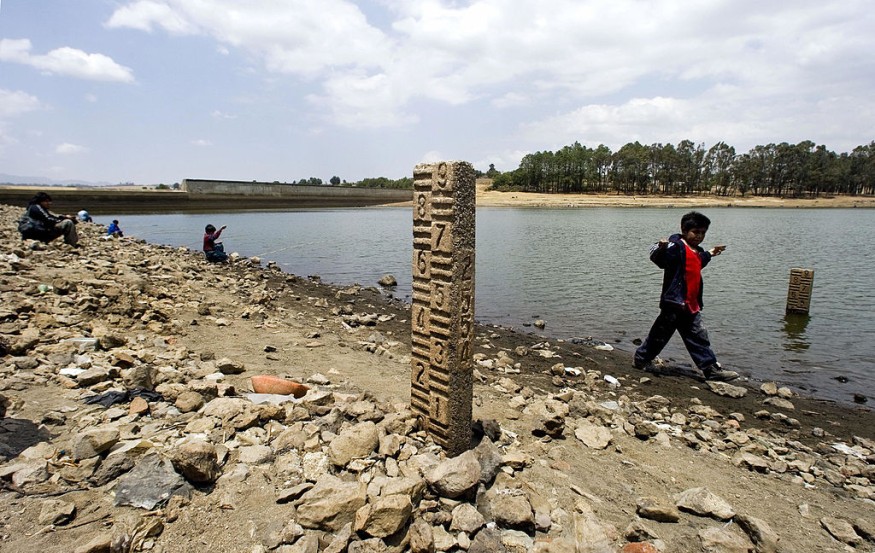
When the rainy season finished, water levels in aquifers were still at extremely low levels, thus authorities in Mexico City curtailed water use.
Extremely Low Water Levels in Mexico City
On the shores of Villa Victoria reservoir, a reminder of the severe drought is shown as ten concrete blocks, once used as boat anchors, now bake under the relentless sun, revealing the reservoir's alarming water shortage. Gabriel Bejarano, a veterinarian, points to a fence a hundred yards from the water's edge, highlighting how the water should typically reach the height of the blocks. This marks the lowest water levels seen in a decade since Bejarano returned to his grandfather's farm.
The dwindling north shore of this lake near Toluca raises a significant concern for Mexico City, located 125 kilometers to the west. Villa Victoria, usually at one-third of its regular capacity, alongside two other drought-stricken reservoirs, forms the lifeblood of the Cutzamala system. This system supplies water to over 20 million people and is currently at an unprecedented low for this time of year, posing a critical challenge for the region.
Mexico's diminishing rainy season exacerbates the crisis, leaving little time for reservoirs to recover. The National Water Commission has imposed 8% water restrictions on the Cutzamala system, raising concerns about more stringent winter limits in Mexico City and Toluca.
Mexico City heavily relies on these reservoirs, providing over a quarter of its water supply. The rest is drawn from the depleting Valley of Mexico aquifer. Areas with limited alternative water sources, reliant on the reservoirs, will face the most severe shortages, casting uncertainty over their future.
Restricted Water Consumption and Supply
Seventy-five percent of Mexico is currently grappling with a widespread drought, as per the National Meteorological Service, with "extreme" drought in Central and North Mexico and "exceptional" drought in Durango and San Luis Potosí. Emergency water distribution via trucks is ongoing in Durango, and 40 million liters have been sent to eight other drought-affected states.
In Lake Pátzcuaro, a popular tourist spot in Michoacán, low water levels threaten navigation and tourism. Mexico City has experienced water shortages just before the rainy season in recent years, with 2021 marked by a severe drought that was partly alleviated by summer rains.
Also Read : Living in Climate Change 'Danger Zones' Can Expose Humans to Deadly, Extreme Weather Events
The End of a Disrupted Rainy Season
El Niño disrupted the usual weather patterns this year, creating a Gulf of Mexico wind shear, as explained by Tereza Cavazos, an oceanography professor. While we can't solely attribute the drier summer to climate change, it aligns with global trends from a warming planet, according to David K. Adams, an atmospheric scientist.
Climate change is also intensifying El Niños. Manuel Perló Cohen, an urban planner, warns that the window for replenishing rain is closing rapidly, and November and December typically bring much less rain than the summer months. He predicts water shortages and suffering for many in Mexico City due to this looming issue.
Related Article : Sahara Dried Out From 800 Years of Extreme Groundwater Harvesting
© 2025 NatureWorldNews.com All rights reserved. Do not reproduce without permission.





